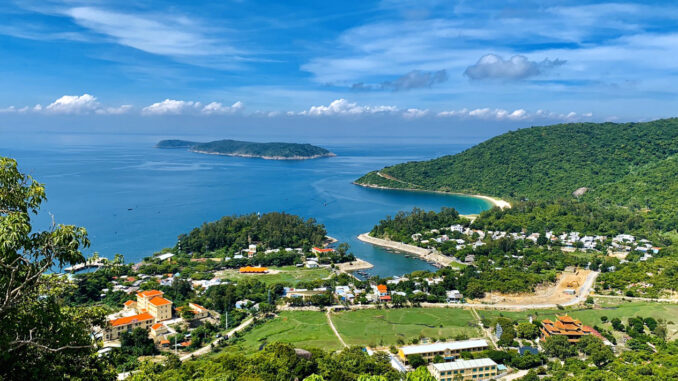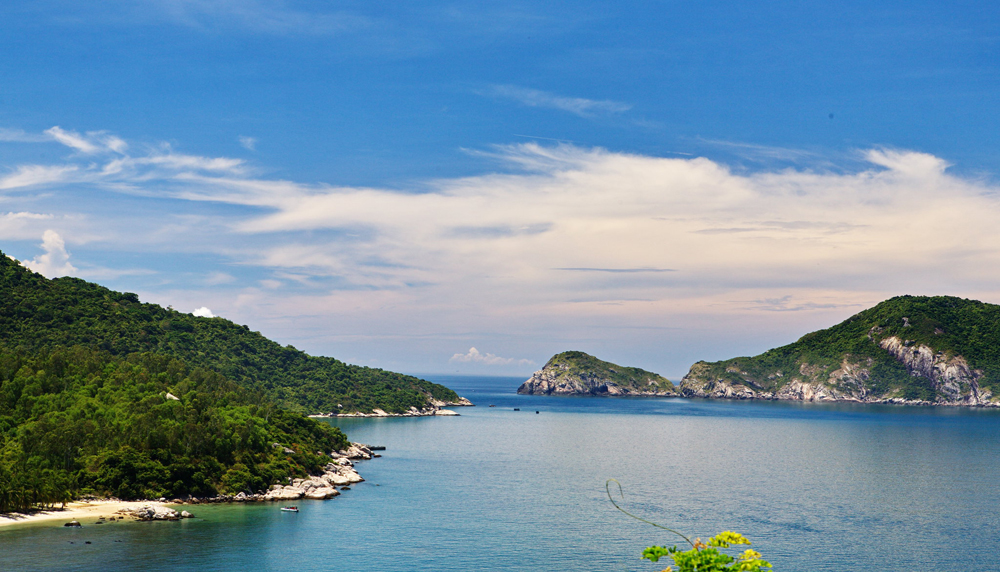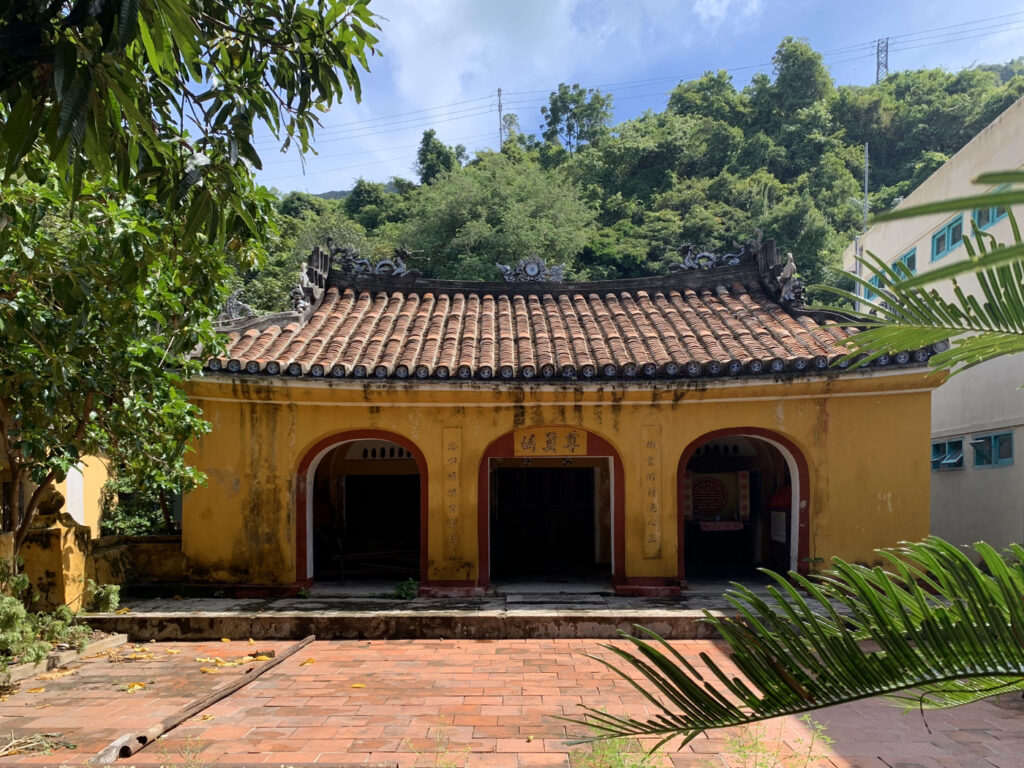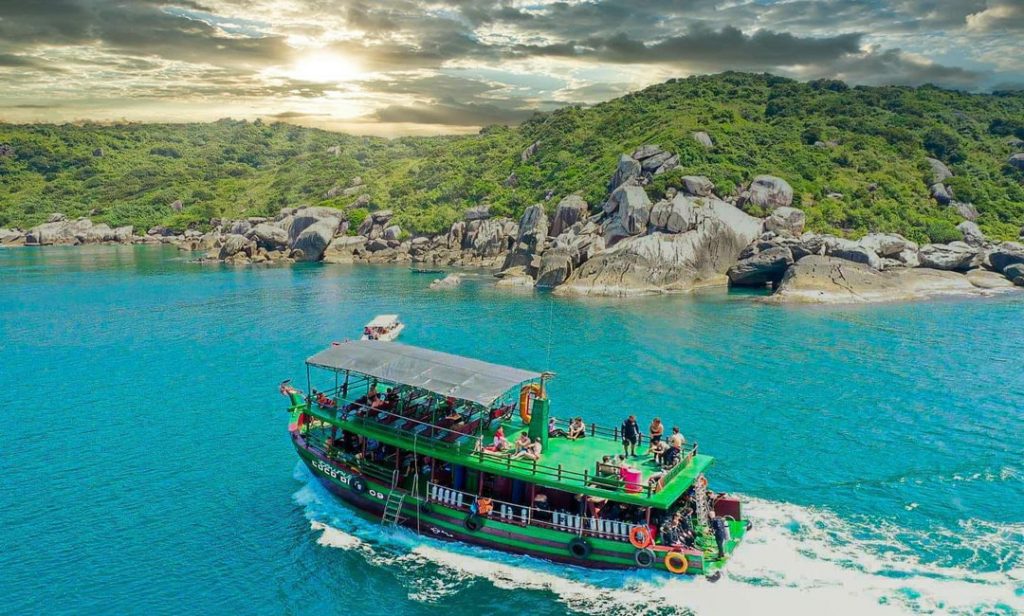
Located at the end of Thu Bon River, it inherits a diversity of ecosystems such as reed beds, sedge beaches, dunes, mangrove forests, nipa palm forests, seagrass beds, coral reefs, seaweed colonies, and natural forests on the island. These ecosystems stretch along river branches and surround Hoi An, bringing Hoi An a wealth of natural and human resources, ecological services, and money. Favorable issues for local economic and social development.
Diverse ecosystem
With 8 small islands (Hon Lao, Hon Dai, Hon Mo, Hon Kho mother, Hon Kho con, Hon La, Hon Tai, Hon Ong) stretching in a green bow shape, Cu Lao Cham has a pristine blue color of forest trees connected to the blue of the sea by a strip of smooth white sand, sparkling under the golden sunlight and deep blue sky…
Cu Lao Cham is blessed by nature, with a cool year-round climate and four-season trees covering the islands. With 1,549 hectares of natural forest and 6,716 hectares of water surface, Cu Lao Cham has an extremely rich biodiversity.

Cu Lao Cham Conservation Area is home to hundreds of species of fish, mollusks, coral reefs, algae beds, seagrass, and other high-value seafood species. Not only that, but this place also has many rare species of animals and plants. Currently, Cu Lao Cham has 12 species of mammals, 13 species of birds, 130 species of reptiles, and 5 species of frogs, of which 2 species are recorded in Vietnam’s animal red book: swiftlets and long-tailed monkeys.
Unique culture
In addition to a rich ecosystem, Cu Lao Cham Marine Protected Area also contains cultural systems left from ancient times, such as Sa Huynh, Champa, and Dai Viet, along with relics that have proven their relationship between Cu Lao Cham and other countries in the region. It is also an anchoring point for international merchant ships on the maritime Silk Road journey. Through archaeological research, it has been shown that over 3,000 years ago, this place was also inhabited by ancient residents. This is truly an ideal place to explore.
Cu Lao Cham still fully maintains the traditional cultural and religious institutions of villages and communes in the Central region of our country. The existing religious relics in Cu Lao Cham were mainly built around the 17th and 18th centuries, such as Dai Can communal house, Thanh Hoang temple, Tien Hien temple, Than Nong temple, Bird nest-making temple, Ong Ngu mausoleum, Co tomb, Xom Cam well, Hai Tang pagoda… are spiritual tourist destinations that attract tourists.

Tourism potential
Currently, Cu Lao Cham Marine Reserve attracts nearly 20,000 tourists each year. It can be said that what attracts tourists here is the desire to admire the wild beauty of the sea, and ancient cultures and explore nature for themselves.
In addition to the natural beauty, the people here are truly the “precious gift” that the island gives to tourists. The sincerity, kindness, hospitality, and high determination to protect and preserve the ecosystem of the people here will make the footsteps of those who wander to the land of Cu Lao nostalgic when leaving.
On Cu Lao Cham in recent years, there is no longer a trace of garbage or plastic bags. Since mid-2009, people here have seriously implemented Hoi An’s directive on not using plastic bags on the island, as well as preserving environmental hygiene. Coming to Cu Lao Cham, the friendliness and loveliness of the people here will make any tourist want to come back.

Conclusion
Cu Lao Cham-Hoi An Biosphere Reserve was recognized by UNESCO on May 26, 2009. As a UNESCO World Heritage Site and a Ramsar Wetland of International Importance, the Cu Lao Cham-Hoi An Biosphere Reserve is recognized for its global significance. It serves as a model for sustainable development, demonstrating how conservation efforts can harmonize with the needs of local communities. The reserve’s ecotourism initiatives provide economic opportunities for local inhabitants while ensuring that tourism activities are conducted responsibly and with minimal impact on the environment.
The future of the Cu Lao Cham-Hoi An Biosphere Reserve lies in the hands of its stakeholders – the government, local communities, and visitors. By working together, they can ensure that this precious natural heritage is preserved for generations to come. Continued conservation efforts, sustainable tourism practices, and community engagement are essential for maintaining the reserve’s ecological integrity and cultural richness.
Get an opportunity to visit the Global Biosphere Reserve in Vietnam through Vietnam E-Visa!